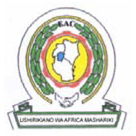
In order to promote public education and public safety, equal justice for all, a better informed citizenry, the rule of law, world trade and world peace, this legal document is hereby made available on a noncommercial basis, as it is the right of all humans to know and speak the laws that govern them.

EAS 62-1:2000
ICS 67.120
EAST AFRICAN COMMUNITY
© EAC 2000
First Edition 2000
i| 1 | Scope | 1 | ||
| 2 | Definitions | 1 | ||
| 3 | Water supplies | 2 | ||
| 4 | Cleaning and sanitizing procedures | 2 | ||
| Section 1: Product | 3 | |||
| 1 | Scope | 3 | ||
| 2 | General requirements | 3 | ||
| 3 | Fresh fish | 3 | ||
| 4 | Frozen fish | 4 | ||
| 5 | Smoked fish | 4 | ||
| 6 | Packaging of fish | 5 | ||
| 7 | Marking of frozen fish | 5 | ||
| Section 2: Sanitation | 7 | |||
| 1 | Scope | 7 | ||
| 2 | Requirements on board the fishing vessel | 7 | ||
| 3 | Requirements at point of unloading from fishing vessel | 8 | ||
| 4 | Requirements during transportation | 8 | ||
| 5 | Requirements for processing establishments | 9 | ||
| 6 | Equipment in processing establishments | 9 | ||
| 7 | Operation in processing establishments | 9 | ||
| Section 3: Requirements for retailers | 10 | |||
| 1 | Scope | 10 | ||
| 2 | Fish preparation area | 10 | ||
| 3 | Shop serving area | 10 | ||
| 4 | Dwelling and utensils | 10 | ||
| 6 | Cleaning | 10 | ||
| Section 4: Requirements for all staff engaged in handling fish | 11 | |||
| 1 | Scope | 11 | ||
| 2 | Personal hygiene and conduct | 11 | ||
| Annex A (informative) Bacteriological water quality | 12 | |||
| Annex B Forms of preparation of fish | 13 | |||
| Annex C (informative) Common species of fish | 15 | |||
| Annex D Application of HACCP in the fish industry | 17 | |||
| D.1 | Introduction | 17 | ||
| D.2 | HACCP principles | 17 | ||
| D.3 | Defect action point analysis | 19 | ||
| D.4 | Application | 19 | ||
Development of the East African Standards has been necessitated by the need for harmonizing requirements governing quality of products and services in East Africa. It is envisaged that through harmonized standardization, trade barriers which are encountered when goods and services are exchanged within the Community will be removed.
In order to achieve this objective, the Partner States in the Community through their National Bureaux of Standards, have established an East African Standards Committee.
The Committee is composed of representatives of the National Standards Bodies in Partner States, together with the representatives from the private sectors and consumer organizations. Draft East African Standards are circulated to stakeholders through the National Standards Bodies in the Partner States. The comments received are discussed and incorporated before finalization of standards, in accordance with the procedures of the Community.
East African Standards are subject to review, to keep pace with technological advances. Users of the East African Standards are therefore expected to ensure that they always have the latest versions of the standards they are implementing.
© East African Community 2000 — All rights reserved*
East African Community
P O Box 1096
Arusha
Tanzania
Tel: 255 27 2504253/8
Fax: 255-27-2504481/2504255
E-Mail: eac@eachq.org
Web: www.each.org
* © 2000 EAC — All rights of exploitation in any form and by any means reserved worldwide for EAC Partner States’ NSBs.
iii ivFish handling, processing and distribution — Code of practice
Part 1:
Fresh fish handling and processing
This East African Code of practice establishes the hygienic and quality requirements for the handling, processing and distribution of finfish intended for human consumption.
It covers with the exception of tuna:
In addition it includes, in Annex C, a list of common and scientific names of fish species, including some molluscs, echinoderms and crustaceans.
This code is divided into 4 Sections as follows:
Section 1 — Product.
Section 2 — Sanitation.
Section 3 — Requirements for retailers.
Section 4 — Requirements for all staff engaged in handling fish.
In this Code unless the content requires.
freshwater and marine vertebrate fish. In this Code fish shall have the same meaning.
fish that has never been frozen, smoked or otherwise preserved, except by chilling, and that complies with the quality requirements of this Code. Fish in rigor shall be deemed to be fresh fish.
fresh fish in accordance with Clause 4 of Section 1
fish which has been frozen but is now unfrozen
1the product prepared from any wholesome fish in fresh, frozen or salted state which has been subjected to a smoking process in an appropriate equipment
a cleaning agent whose primary function is to assist in the removal of dirt and organic matter
a compound whose primary function is to reduce or, inhibit the growth of microorganisms
For the washing of fish there shall be an adequate supply of potable water under satisfactory pressure.
In the cleaning and sanitizing of plant and equipment, the following 5 distinct operations shall be employed:
Standard cleaning procedures shall be developed for use in the various stages of the catching and processing line. Where practicable the effectiveness of routine cleaning shall be checked by periodic bacteriological sampling.
Other points to be noted are as follows:
This Section 1 specifies the quality requirements, packaging and marking for the fresh, chilled, frozen and smoked fish.
Chilling — Fish shall be chilled immediately after catching (or after bleeding and gutting if these processes are done immediately after catching) so as to reduce the temperature of the fish to below 2°C as quickly as possible, and shall be maintained between 2 °C and –1 °C until processing begins. The chilling media shall be ice, refrigerated seawater or chilled sea voter. The ratio of fish to ice shall be 1:2.
Where fish is described other than by scientific name, the common names listed in Annex C shall be used where for any reason (for example, sales in a foreign country) fish is described by a non-scientific other than the conmen name, the common name shall also be shown to permit positive identification of the species.
The definitions of recognized forms of preparation are, listed in Annex B. Fish described by the terms listed shall conform to the appropriate definition.
Where fish is glazed, the liquid used for glazing shall not exceed 10 °C and shall be changed sufficiently often to prevent a build-up of micro-organisms.
Fish shall be washed free of dirt, sand, grit or other contamination at the earliest practical point after catching. Fish which shows or obvious disease or traumatic injury shall be removed from the catch.
Fish shall not contain micro-organisms, which represent a health hazard to consumers, and shall not show overt signs of spoilage. The limits for pathogens or pathogenic indicators for all the states of fish in this Code shall be as shown in Table 3.
After processing, each fish, fillet or steak shall be intact and free of torn or ragged edges. Scraps shall not be included. Processed fish shall be kept separately from unprocessed fish to avoid any cross contamination.
The temperatures maximum holding times shall be as shown in Table 1.
Fresh fish handled and treated in accordance with Clauses 2.1, 2 and 3 of Section 2 shall exhibit where applicable, the following characteristics:
Before freezing, fish shall be washed thoroughly and drained. The fish shall then be packed in suitable containers, and it shall pass through the critical zone from 0 °C to –5 °C in a period not exceeding 6 hours. The process shall not be regarded as complete unless and until the product temperature has reached –18 °C at the thermal centre.
The frozen product shall be free from noticeable desiccation, discolouration or blemish.
After the fish has thawed, the odour shall be fresh and characteristic. The fish shall be free from noticeable dessication, discolouration or blemish and it shall not yield excessive drip.
The end product of this process shall be designated under the following names, followed by the name of the fish:
The fish shall be subjected in accordance with sound commercial practice, to the action of smoke from wood.
The wood shall be free from gum, paint, timber preservative or other added substances.
4Hot smoking — The fish shall be subjected to the action of hot smoke until the fish is well cooked. The temperature for smoking shall not be less than 40 °C.
Dry or hard smoking — The fish shall be subjected to the direct action of fire until the fish is well cooked. A subsequent treatment by a cold smoke shall follow for at least one day, depending on the quantity and size of the fish being smoked.
Cold smoking — The fish shall be washed and salted. It is then vashed. The fish shall then be subjected to the direct action of cold smoke at a temperature of not more than 40 °C.
Equipment — Any smoking oven made from mud, concrete or drums may be used, provided that the distance from the fire to the fish shall be at least 90 cm. If the traditional rectangular ovens are used, any airtight material, so as to ensure a uniform smoked product, shall surround the gratings.
The premises for smoking — The place for handling and smoking fish shall be enclosed with a roof and screened with mosquito netting and shall be rodent-proof.
The storage temperature of cold smoked fish shall be in accordance with Table 2.
The following information and such other information as inlay required by the sporting country shall be marked clearly, legibly and indelibly on the immediate package or carton:
| Stage | Maximum time | Temperatures |
|---|---|---|
| a) Storage (before freezing) of fish landed on shore | Storage of fresh fish shall not exceed 6 days | Minimum –1 °C |
| Iced or subjected to equivalent technique | Maximum +2 °C | |
| b) Processing period for fish filets | 3 hours form filleting and packing to freezing or chilling | Minimum –1 °C Maximum +7 °C |
| (c) Storage of fresh processed | Maximum 6 days | Minimum –1 °C Maximum –23 °C Maximum –18 °C |
| (d) Freezing | Maximum 6 hours for the thermal centre to pass through the zone of maximum ice crystals formation (critical zone) |
-5 °C in centre block |
| (e) Storage of frozen fish frozen fish | 3 months | Maximum –20 °C |
| 6 months | Maximum –23 °C | |
| 12 months | Maximum –28 °C | |
| (f) Transport of frozen fish | — | Maximum –18 °C |
| Stage | Maximum time | Temperatures |
|---|---|---|
| (a) Storage of fresh fish, cold smoked fish and thawed fish | Up to and including 12 hours | Minimum –1 °C Maximum + 7 °C |
| (b) Storage of fresh fish and cold smoked fish | Over 12 hours and up to 6 days | Minimum –1 °C Maximum 2 °C |
| (c) Storage of frozen fish and fish products | In accordance with Table 1 | In accordance with Table 1 |
| (d) Display of frozen fish and fish products | — | Maximum –18 °C |
| Product | Test | Limit per g | |||
|---|---|---|---|---|---|
| n | c | m | M | ||
| 1. Fresh and frozen fish including fish frozen at sea and fish blocks | Faecal coliforms (MPN) | 5 | 3 | 4 | 400 |
| Staphylococcus (indicator) | 5 | 3 | 103 | 2×103 | |
| 2. Fresh water fish | Faecal coliforms (MPN) | 5 | 3 | 4 | 400 |
| Staphylococcus (indicator) | 5 | 3 | 103 | 2×103 | |
| Salmonella | 5 | 0 | — | — | |
| 3. Cold-smoked fish | |||||
| (a) Cooked prior to eating | Faecal coliforms (MPN) | 5 | 3 | 4 | 400 |
| Staphylococcus (pathogen) | 5 | 3 | 103 | 2×103 | |
| (b) Eaten uncooked | Faecal coliforms (MPN) | 5 | 1 | 4 | 400 |
| Staphylococcus (pathogen) | 5 | 1 | 103 | 2×103 | |
| n = number of sample | |||||
| c = number of samples that can have number of organisms between the two limits (M and m). | |||||
| m = lower acceptable limit | |||||
| M = upper limit. Only c cut off n samples would be acceptable at this limit. | |||||
This Section 2 specifies sanitation requirements for fresh, frozen and smoked fish.
Fishing Vessel
Unloading procedures shall be in accordance with sound commercial practice, and fish shall not be left exposed to sunlight, rain, wind, extremes of temperature, or contamination by birds and vermin.
Any conveyors, fish pumps, or other mechanical systems which are used for unloading and which come into contact with the fish shall be maintained in good repair and thoroughly cleaned and treated with a sanitizer after each operation.
Unless the fish is to be processed immediately, fish which has been de-iced during unloading shall be re-iced or placed in a chiller operating at temperature between 2° and –1° within 3 hours.
Fish or fish products shall not be offered for transport when the internal product temperature is higher than 2 °C, except as provided for in Clause 3.3 Fish in a spoiled or an incipient spoiled condition shall not exceed the external temperature of 2 °C.
These shall comply with Heath Regulations as stipulated in the food, Drugs and Chemical Substances Act.
These shall comply with the Health Regulations of as stipulated in the Food, Drugs and Chemical Substances Act (Cap. 254).
This Section 3 specifies the requirements for retailers handling fresh fish, frozen fish and smoked fish.
The preparation area shall comply with the provision of the Health Regulations as stipulated in the Food, Drugs and Chemical Substances Act.
The public shall not be permitted in this area.
The shop-serving area shall be so constructed as to comply with the provisions of the Health Regulations as stipulated in the Food, Drugs and Chemical Substances Act and Public Heath Act.
Every retailer dealing in fresh fish shall have effective chilled storage with a capacity of not less than 1 day’s supply. Retailers dealing in frozen fish shall provide refrigerated storage with a capacity of not less than 2 day’s supply.
Fresh fish shall be stored in accordance with Table 2.
Frozen fish shall be displayed at a temperature in accordance with Table 1.
Fish and fish products exhibited for sale shall be:
Windows slabs and shelves used for displaying fish and fish products shall be made of, or covered with, stainless steel, glass, marble, plastic, or other material possessing similar surface characteristics and shall be so arranged as to facilitate drainage and cleaning.
Containers in which fish is washed and processed shall be made of stainless steel or material with similar surface.
The cleaning of the premises, equipment and utensils shall be in accordance with the Health Regulations as stipulated in the Food, Drugs and Chemical Substances Act and Public Health Act.
Returnable fish containers shall be effectively cleaned and treated with a sanitizer immediately after use and returned as practicable.
Returnable fish container shall not be used for any other purpose.
10This Section 4 specifies the hygienic requirements for all staff engaged in handling fish.
No person who is suffering from a communicable disease or who is a carrier as defined in Kenya Health Regulations or who is suffering form a condition causing a discharge of pus or serum form any part of the head, neck, hands, or arms, or has reason to believe or suspect that he is likely to transmit disease producing organisms to any fish shall engage in the preparation, packaging or handling of fish or fish product for sale, or of any material used or likely to be used as wrapper or container for fish for sale.
If the occupier of any establishment engaged in handling fish has reason to believe or suspect that any person, whether suffering form a communicable disease or not, is likely to transmit disease shall be excluded from working in any such establishment until the person furnishes a certificate from a medical practitioner that he is free from infection and any condition causing a discharge of pus or serum form any par of the head, neck, hands or arms.
No person shall spit or smoke or chew tobacco being handled. The consumption of food or drink shall be prohibited. Notices to this effect shall be prominently displayed.
All persons in the processing area shall wear clean Protective clothing’s, including headgear. All personnel coming in contact with unpacked fish shall wear waterproof protective clothing, which shall be kept clean at all times and treated with a sanitizer after each days operations.
Glove used for handling of fish shall be maintained in a sound, clean, and sanitary condition, and shall be made from an impermeable material except where their usage would be incompatible with the work involved.
Staff shall keep their fingernails short and clean. The wearing of fingernails varnish by employees while handling processed fish with the bare hands shall not be permitted. Employees shall wash their hands with soap and water before starting work and also after each absence from the processing area.
11Ideally, water used for washing fish shall be free from microorganisms. In practice, this quality is not always attainable. The following standard for water from distribution system is therefore recommended:
Where it is impracticable to supply water through a piped distribution network and where reliance has to be placed on alternative source (for example, wells, springs, sea-water, etc.) the standard outlined in Clause A.1. may not be obtainable. However, such a standard should be aimed at, and polluted water shall not be used. Persistent failure to achieve a coliform count of less than 10 per 100 ml, particularly if E. coli is repeatedly found, shall as general rule, lead to condemnation of the supply.
12(For the diagrammatic illustrations of these forms see Figures 1 to 7)
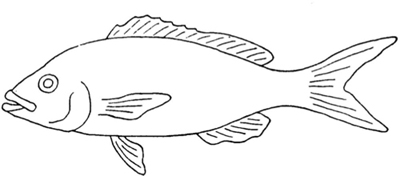
Figure 1 — Whole fish
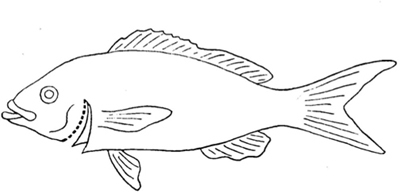
Figure 2 — Gutted fish
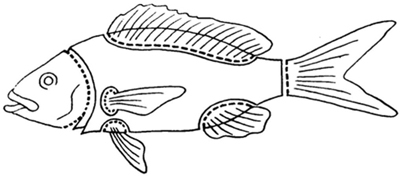
Figure 3 — Headed and gutted
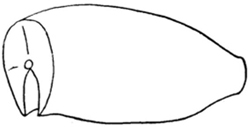
Figure 4 — Pan-dressed fish
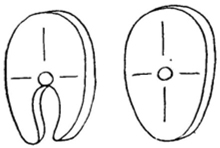
Figure 5 — Steaks
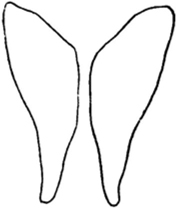
Figure 6 — Single fillets
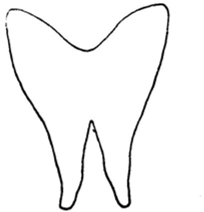
Figure 7 — Double fillets
14Below is a list of most common marine fish in Kenya waters:
| Scientific name | Common name | Swahili name |
|---|---|---|
| Signus Oranism | Rabbit fish | Tafi |
| Siganus stellatus | Spotted rabbit fish | Tafi Manga |
| Aprion Verescens | Streaker | Murongo |
| Lutianus argentimaculatus | Red snapper | Tasanda |
| Lutianu vaigiensis | Speckled snapper | Haraki |
| Lutianus duodermlineatus | Snapper | Mrongo |
| Lutianus rivulatus | Speckled snapper | Cheusi |
| Lutianus Kashmira | Blue striped snapper | Tembo |
| Epinephelus macrospilus | Rock-cod | Tewa |
| Luthrinua rebulcsus | Scavenger | Changu |
| Mugil cephalus | Flathead mullet | Mkize |
| Scomberromous commersoni | King fish | Nguru |
| Acanthocybium solandri | Wahoo | Kanadi |
| Thunnus albacores | Yelow Fin tuna | Jodari |
| Euthynnus pelamis | Bonito or skippjack | Jodari |
| Rastrellige Kanagurta | Little mackerel | Kiboma |
| Istriophorous gladius | Sailfish | Sulisuli |
| Makaira herscheli | Marlin or spearfish | Nduaro |
| Makari nigricans | Blue marlin | Sulisuli |
| Caranx Kippos | King fish | Kole kole |
| Chorinemus tol | Queen fish | Pandu |
| Callyyodon guttatus | Parrotfish | Pono |
| Pomadasys operculare | Spotted grunter | Pamamba |
| Thala soma hebraicum | Rainbow fish | Pono |
| Upeneus tragula | Red fish | Mkundaji |
| Pscudeopeneous | Goad fish | Mkundaji |
| Chanos Chanos | Milk fish | Mwatiko |
| Achoviell indica | Anchovy | Simu |
| Sardinella Melanura | Sardine | Simu |
| Acanthopagrus berda | Mud Bream | Kiuwa |
| Gaterine gaterinus | Lemon fish | Mlea |
| Gaterin sordidus | Black sin | Fute |
| Rachyeentron Canadus | Runner | Songoro |
| Gterin batata | Grey skin | Kambu maji |
| Naso brevircayris | Unicorn fish | Sange |
| Acantrurus Fuliginosus | Surgeon fish | Kangaja |
| Molluscs | 15 | |
| Octopus Maorum | Octopus | Pweza |
| Ostrea lutaria | Oyster, dredge | Mshaza |
| Notodarus sloani | Squid, arrow | Mgisi |
| Crabs | Kaa | |
| Prawns | Kamba ndogo | |
| Lobsters | Kamba mawe | |
| Bench-der-mer | Fongoola Pwani |
Commercially important fresh water fishes
| Common name | Local name |
|---|---|
| (a) Tilapia | Ndege |
| (b) Nile Perch (lates niloticus) | Mbuta |
| (c) Barbus | Fwani |
| (d) Bargus | Sewu |
| (e) Protopterus (Lungfish) | Kamongo |
| (f) Engraulicypris | Omena |
| (g) Crayfish (Procambarus clarkii) | Okela |
| (h) Crayfish (Catfish) | Mumi |
| (i) Black bass (micropterus Salmoides) | Chengu |
| (j) Trout | |
| (k) Haplochromis | Fulu |
| (l) Mormyrus | Suma |
| (m) Labeo | Ningu |
| (n) Shilbe | Sire |
| (o) Synodontis | Okoko |
| (p) Alestes | Osoga |
The Hazard Analysis Critical Control Point (HACCP) is a science-based system which is aimed to prevent food safety problems from occurring rather than reacting to non-compliance of the finished product. The HACCP system accomplishes this by the identification of specific hazards and the implementation of control measures. An effective HACCP system should reduce the reliance on traditional end-product testing.
This annex explains the principles of HACCP as it applies aquaculture and molluscan shellfish production and to the handling and processing, but the Code can only provide guidance on how to use these principles and offer suggestions as to the type of hazards which may occur in the various fishery products. The HACCP plan, which should be incorporated into the food management plan should be well documented and be as simple as possible.
This annex also explains how a similar approach involving many of the principles can apply to the broader application covering the essential quality, composition and labelling provisions of Codex standards or other non-safety requirements which in this case are referred to as Defect Action Point Analysis. This approach for defect analysis is optional and other techniques, which achieve the same objective, may be considered.
Figure D.1 summarises how to develop a HACCP and Defect Analysis system.
The HACCP System consists of seven principles, which are
PRINCIPLE 1 — Conduct a hazard analysis.
PRINCIPLE 2 — Determine the Critical Control Points (CCPs).
PRINCIPLE 3 — Establish critical limit(s).
PRINCIPLE 4 — Establish a system to monitor control of the CCP.
PRINCIPLE 5 — Establish the corrective action to be taken when monitoring indicates that a particular CCP is not under control.
PRINCIPLE 6 — Establish procedures for verification to confirm that the HACCP system is working effectively.
PRINCIPLE 7 — Establish documentation concerning all procedures and records appropriate to these principles and their application.
These principles have to be followed in any consideration of HACCP.
HACCP is an important management tool, which can be used by operators for ensuring safe, efficient processing. It must also be recognized that personnel training is essential in order that HACCP will be effective. In following HACCP principles, users are requested to list all of the hazards that may be reasonably expected to occur for each product type at each step or procedure in the process from point of harvest, during unloading, transport, storage or during processing, as appropriate to the process defined. It is important that HACCP principles be considered on a specific basis to reflect the risks of the operation.
17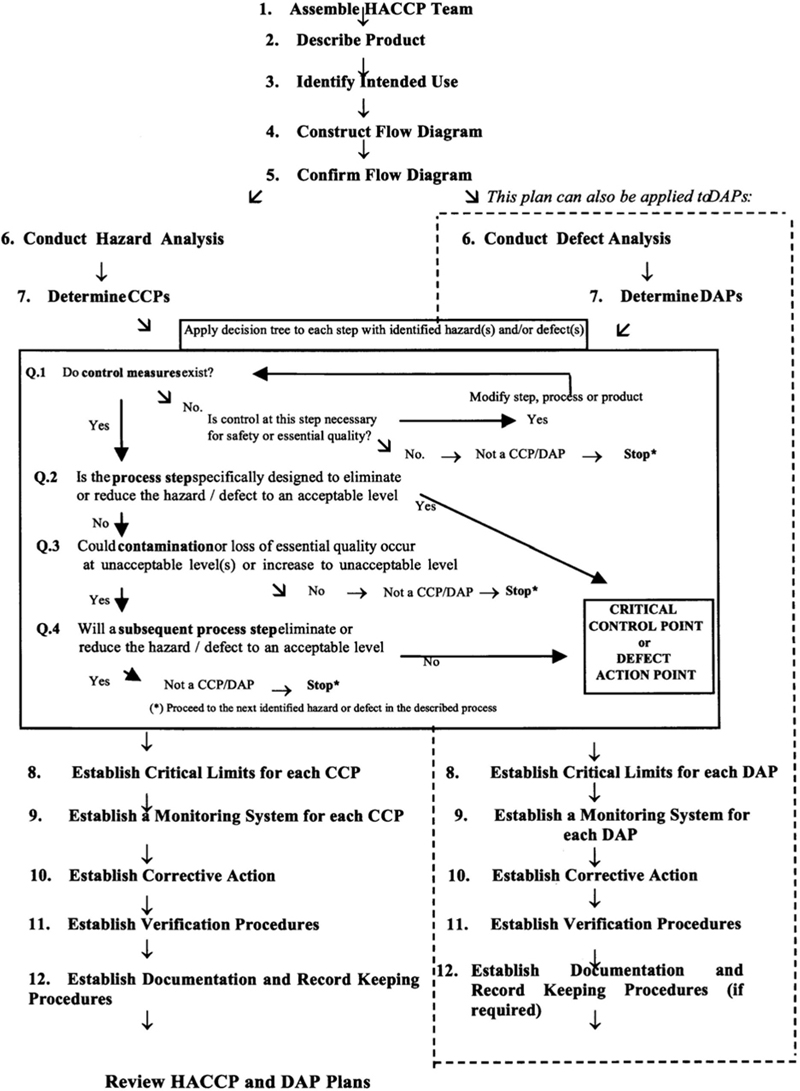
Figure D.1 — Summary of how to implement a HACCP and Defect Analysis
18Since the Code is intended to cover not only those hazards associated with safety but to include other aspects of production including the essential product quality, composition and labelling provisions as described in product standards developed by the Codex Alimentarius Commission, not only are critical control points (CCP) described but also defect action points (DAP) are included in the Code. The HACCP principles may be applied to the determination of a DAP, with quality instead of safety parameters being considered at the various steps.
Each aquaculture, molluscan shellfish, shellfish and fish facility should ensure that the provisions of the appropriate Codex standards are met. To accomplish this, each facility should implement a food safety management system based on HACCP principles and should at least consider a similar approach to defects, both of which are described in this code. Prior to the application of HACCP to any segment of the growing, handling and processing chain, that segment must be supported by a pre-requisite programme based on good hygienic practice (see Section 3). It should be noted that parts of the pre-requisite programme may be classified as a CCP or DAP within a particular process.
The food management system developed should indicate responsibility, authority and the interrelationships of all personnel who manage, perform and verify work affecting the performance of such systems. It is important that the collection, collation and evaluation of scientific and technical data should be carried out by a multi-disciplinary team. Ideally, a team should consist of people with the appropriate level of expertise together with those having a detailed knowledge of the process and product under review. Examples of the type of personnel to include on the team are the processing facility manager, a microbiologist, a quality assurance/quality control specialist, and others such as buyers, operators, etc., as necessary. For small-scale operations, it may not be possible to establish such a team and therefore external advice should be sought.
The scope of the HACCP plan should be identified and should describe which segments of the food chain is involved and the general classes of hazards to be addressed.
The design of this programme should identify critical control points in the operation where the processing facility or product will be controlled, the specification or standard to be met, the monitoring frequency and sampling plan used at the critical control point, the monitoring system used to record the results of these inspections and any corrective action when required. A record for each critical control point that demonstrates that the monitoring procedures and corrective actions are being followed should be provided. The records should be maintained as verification and evidence of the plant’s quality assurance programme. Similar records and procedures may be applied to DAPs with the necessary degree of record keeping. A method to identify, describe, and locate the records associated with HACCP programmes should be established as part of the HACCP programme.
Verification activities include the application of methods; procedures (review/audit) and tests in addition to those used in monitoring to determine: